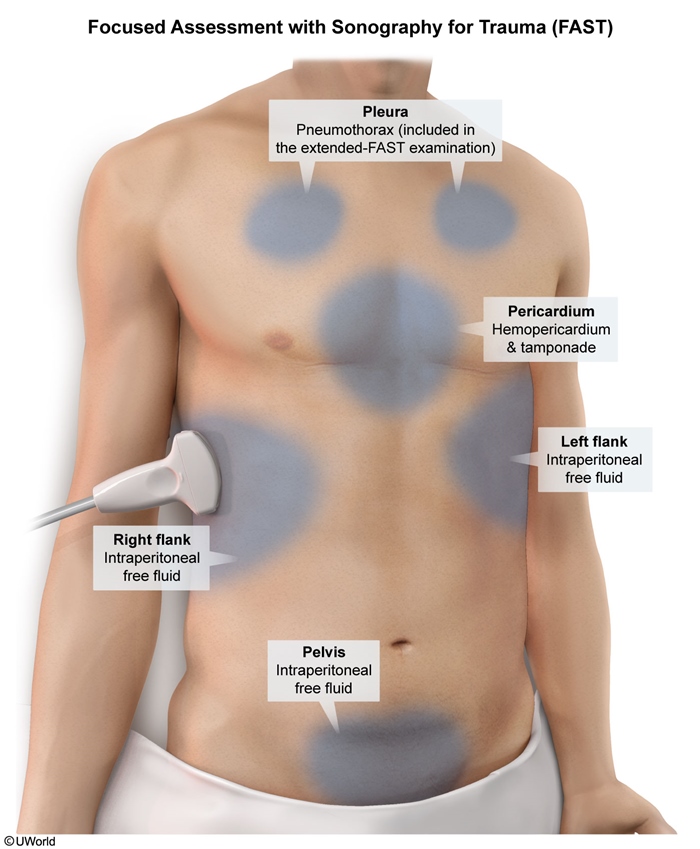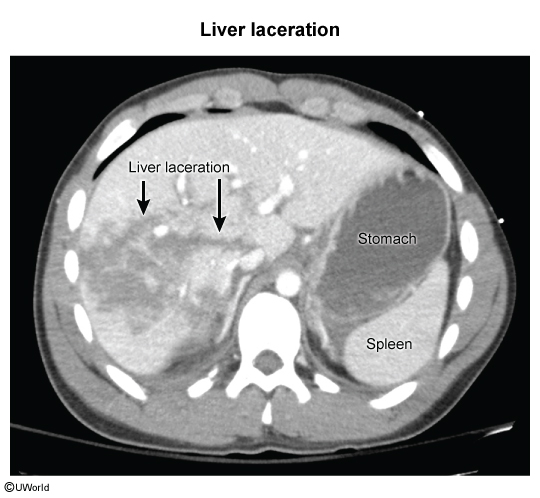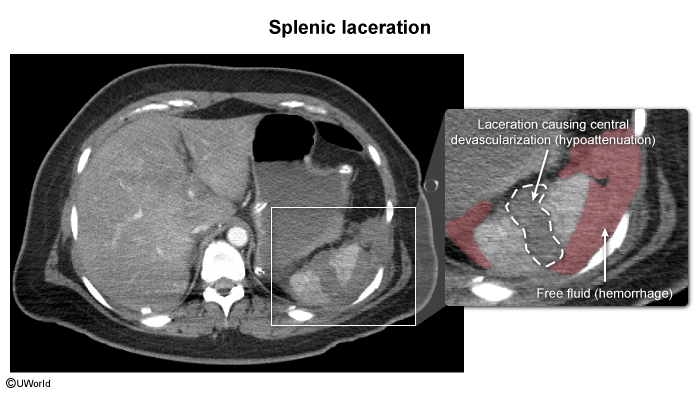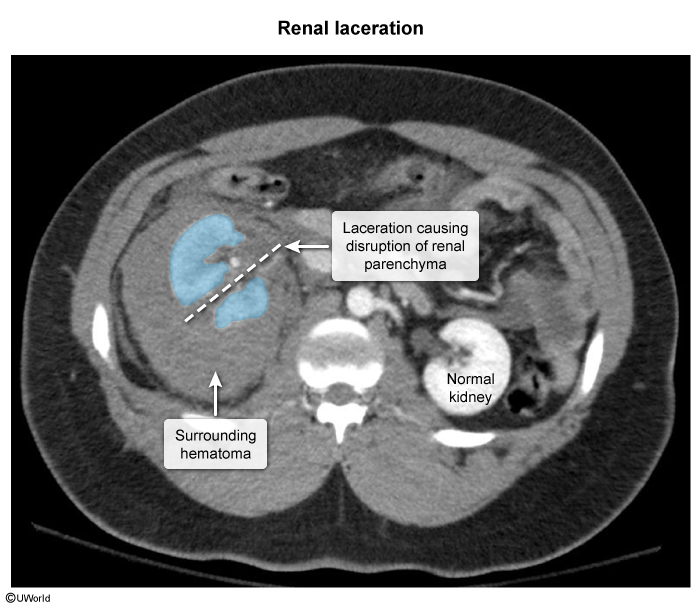Trauma: Penetrating Abdominal Trauma
Article Sections
Introduction
Penetrating trauma to the abdomen results from an object piercing the body and violating the pleural, peritoneal, or other body cavities. The nature of these injuries is highly dependent on the velocity, size, and angle of the object. Common mechanisms include gunshot wounds (GSWs), stab wounds, and shrapnel from explosions. High-velocity injuries (eg, GSWs) often result in more extensive internal damage compared to low-velocity injuries like stabbings due to the larger cavitation and shockwave effects.
The main concern is direct injury to vital structures. In the abdomen, the liver, kidney, spleen, intestines, and major blood vessels (eg, the aorta) are at risk. Injury to these structures can cause hemorrhage, peritonitis, and sepsis.
In contrast to blunt trauma, which usually results in diffuse injury through the transfer of kinetic energy, penetrating trauma typically causes focal damage along the path of penetration. Thus, whereas blunt trauma may lead to widespread tissue damage (eg, organ contusions), penetrating trauma involves more precise injuries, often requiring surgical intervention for hemorrhage control or repair of damaged structures.
Continue Learning with UWorld
Get the full Trauma: Penetrating Abdominal Trauma article plus rich visuals, real-world cases, and in-depth insights from medical experts, all available through the UWorld Medical Library.
Figures
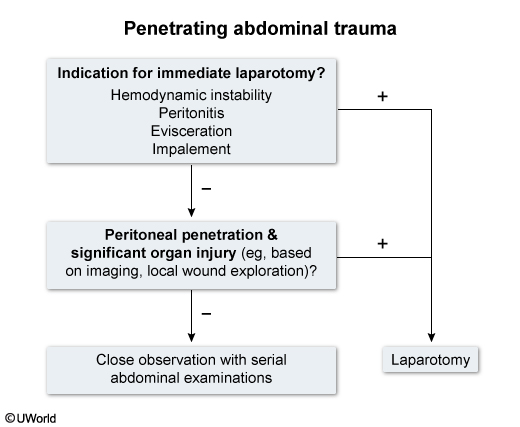
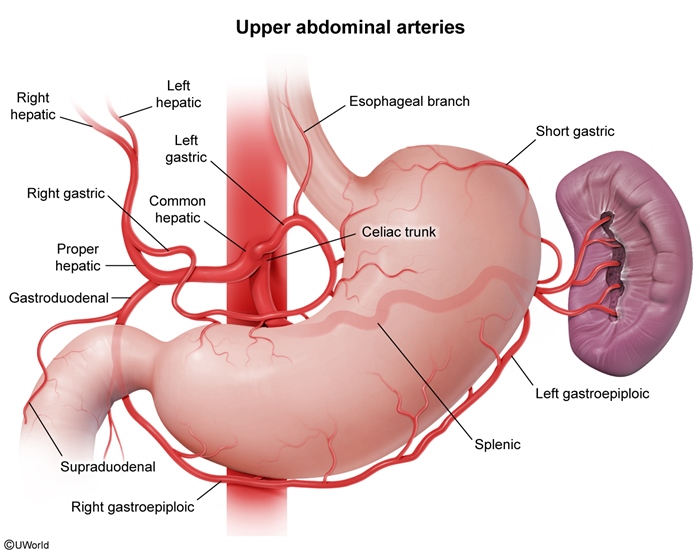
Images
